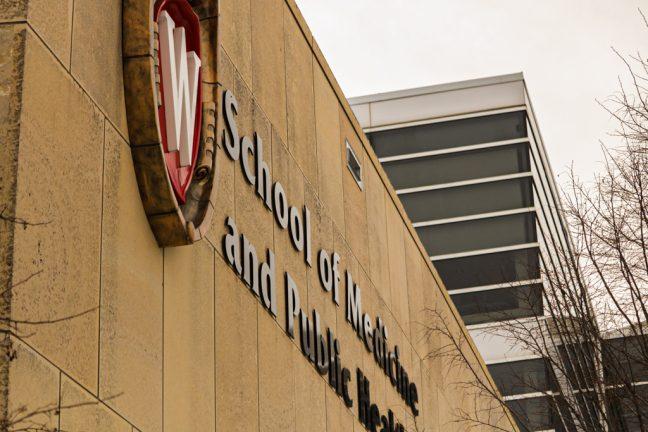While the University of Wisconsin makes attempts to modernize education through upgrades in technology, staff and students alike are yearning for improvements in classroom basics, such as adequate desk space and comfortable chairs.
From large lecture halls to smaller discussion rooms, inconsistencies in the type of learning environment each classroom provides have caught the attention of both lecturers and students.
Experts on classroom design have said that students in a comfortable environment will learn more than a student who is in less than adequate conditions.
J. Thomas Bowen, associate vice president for finance and administration at the University of Georgia, co-wrote the Classroom Design Manual after experiences teaching in rooms that he believes shouldn’t qualify as classrooms.
While the guide goes into very specific requirements to create optimal classroom environments, it focuses on simple “golden rules.” The three basics are that students should be able to see the board, be able to hear what is being said and be comfortable.
UW Assistant Professor of Engineering Professional Development Jeff Lackney feels that there is an assumption that classrooms are for teachers and not for students.
“An assumption is that teachers are the deliverers and sages on stage and that students are [there in order] to download knowledge from the instructor,” Lackney said.
Though most complaints are in regard to large lecture halls, Lackney would like to see simple adjustments made in smaller discussion rooms. Tables instead of chairs and desks would afford smaller group-work-focused, discussion-centered classes in his opinion.
“Every windowless classroom should be removed from the campus or turned into a storage closet; the lack of natural light and fresh air is inhumane,” Lackney said.
According to Lackney, the models for classroom environments on campus are spaces found in the Pyle Center.
“What we do for professional development we should provide for students as well across the campus whenever we can,” he said.
The Division of Information Technology has sought to combat this problem by implementing a classroom efficiency series to promote awareness of instructional technology.
“I have found that the attempts to provide audio-visual equipment, computer projection equipment, and other instructional aids in older classrooms around the campus have been quite good and technical assistance has not been far away,” Lackney said. “Unfortunately, technology podiums keep me up in front of the class tied to my laptop and other AV equipment.”
Creator of a website on classroom design, Ron Baker covers all the basics to improve the teaching atmosphere and delves into more minute specifications for the proper classroom. He gives exact measurements and qualifications for perfect conditions of lighting, temperature, acoustics, and furniture. Although students may not have exact measurement standards, many will be the first to say that items such as desks are generally not large enough.
UW freshman Alexis Strack understands the time and money involved in improvements like new seating, but says students should not be embarrassed to attend a class because they cannot comfortably fit in their seats.
“If airlines have adapted in seating design, why can’t we?” Strack said.
UW’s Space Management Office deals with classroom planning and improvement. Annually, Space Management staff assesses the conditions of General Assignment classrooms. They are currently modernizing and have plans to renovate a substantial number of facilities, including humanities, a campus building emblematic of inabilities to maximize educational potential. In addition, the SMO offers training and support for multimedia classrooms.
More substantial construction goes through UW’s Major Projects, which is responsible for renovations, additions and new building projects.
Due to the fact that the UW campus has almost 400 general assignment classrooms, the Classroom Media Support can only make technological improvements on a select few of them every year.
They receive funds from the state Instructional Technology Improvement Program and prioritize improvements on criteria such as building and room location, room size, and room layout. However, small aspects like the slope of the floor and lack of air conditioning can disqualify a room from being improved.
UW Biological Systems Engineering Professor David Bohnhoff said that the faculty has put its own money into maintaining the main lecture facility at 460 Henry Mall, even though the facility is a general assignment classroom.
“Specifically, I used my own research funds to purchase the computer and DVD player currently in [Agricultural Engineering] Room 101 in 460 Henry Mall,” Bohnhoff said. “Additionally, I built the projector cabinet that stands in the back of the room, which saved us a good $1000.”
He reports that seating has recently been fixed and that a lecture program has been removed in Room 101 to accommodate individuals with disabilities.
However, UW is by no means the only college to have a variety of classroom settings. Nearly every college has a range of rooms from those in need of renovation to those that have picturesque accommodations.
For example, the University of Connecticut is not exempt from such contrasts in classroom amenities.
Connecticut holds classes in surroundings like the brand new, $27 million School of business to a general building called Arjona, which has been referred to as a cinder-block monster.
“When it comes right down to it, the physical surroundings don’t matter that much,” Bohnhoff said. “Some of the greatest discussions and teaching moments that I have been involved in have occurred in the most run-down facilities.”











